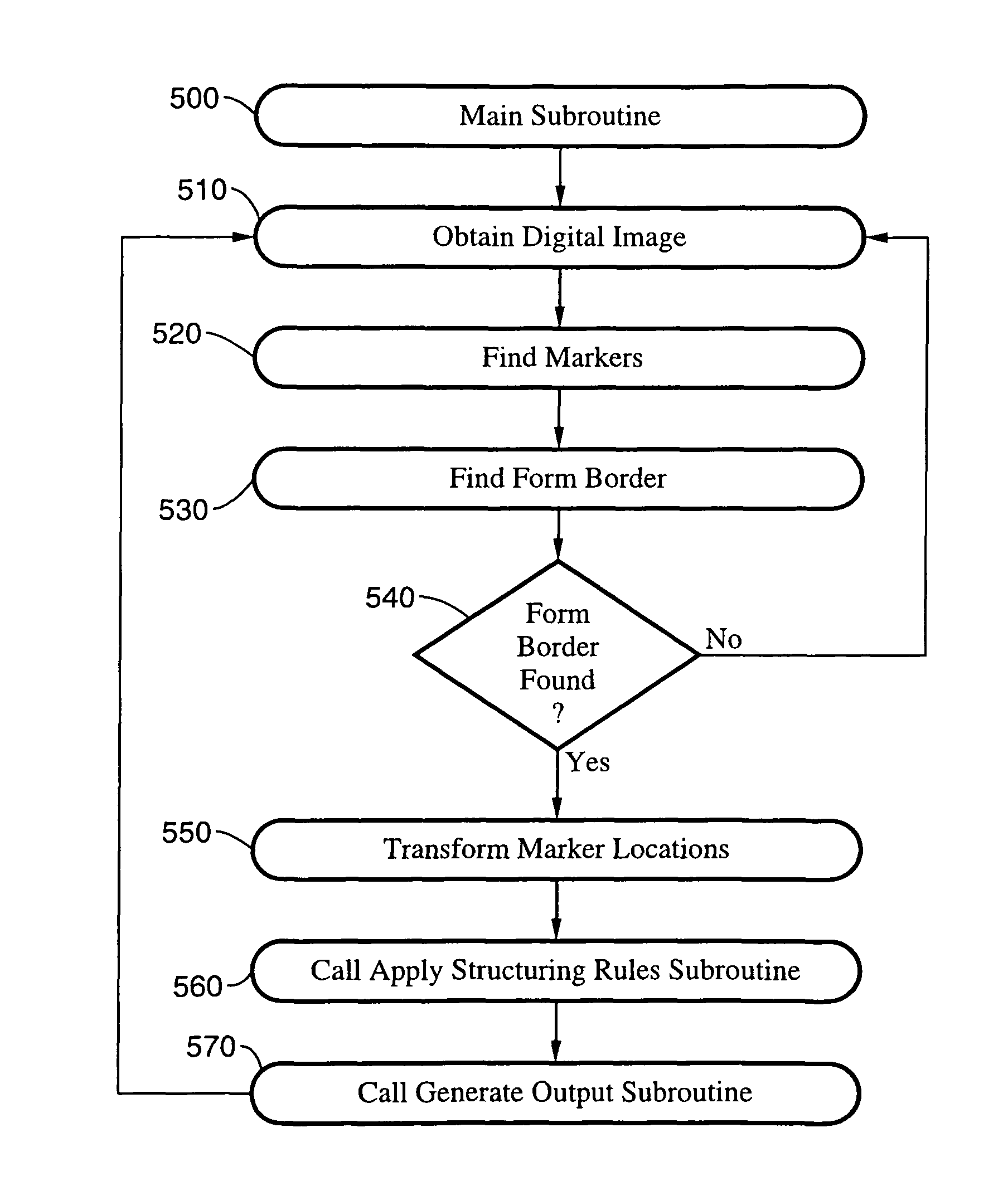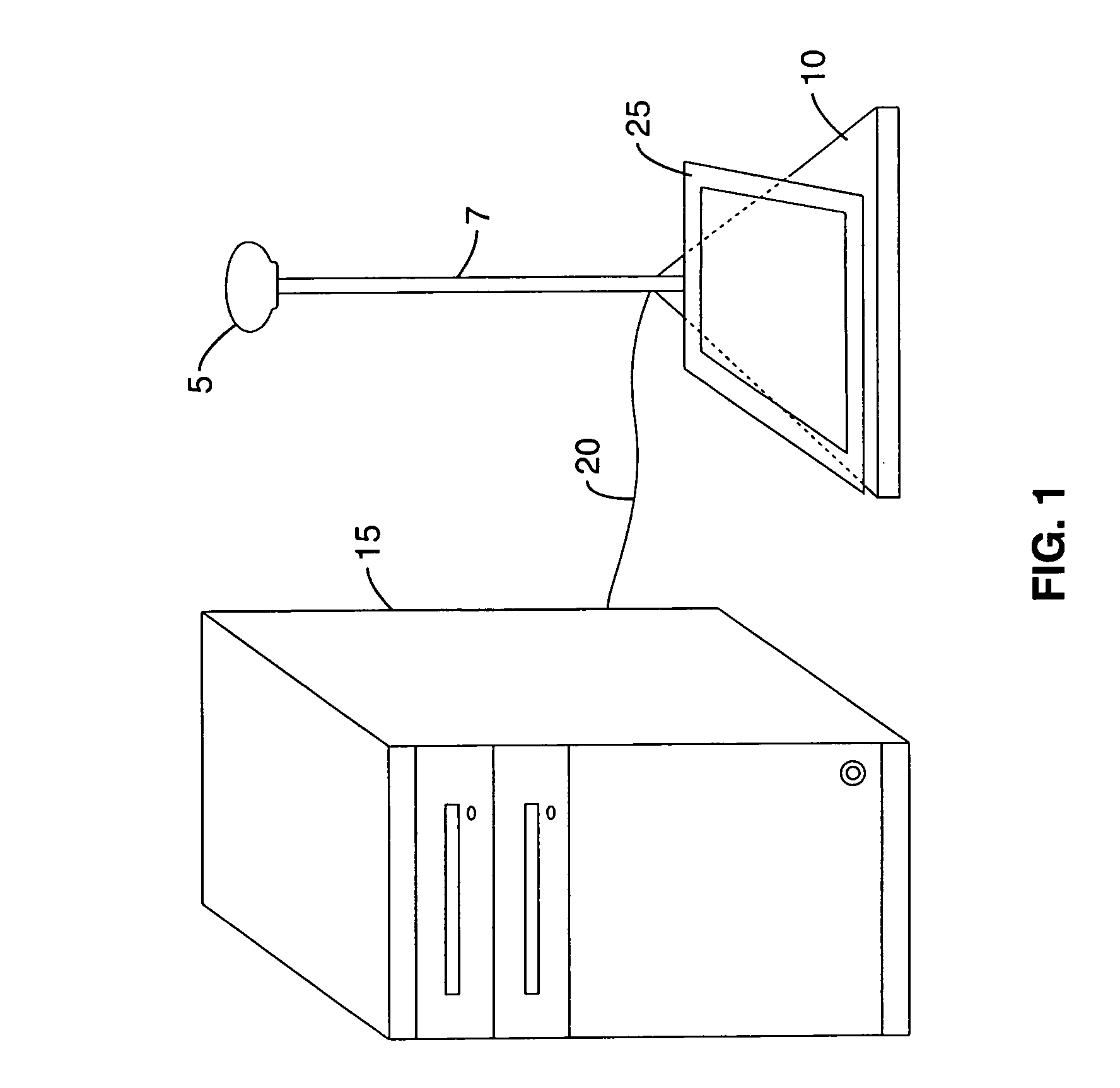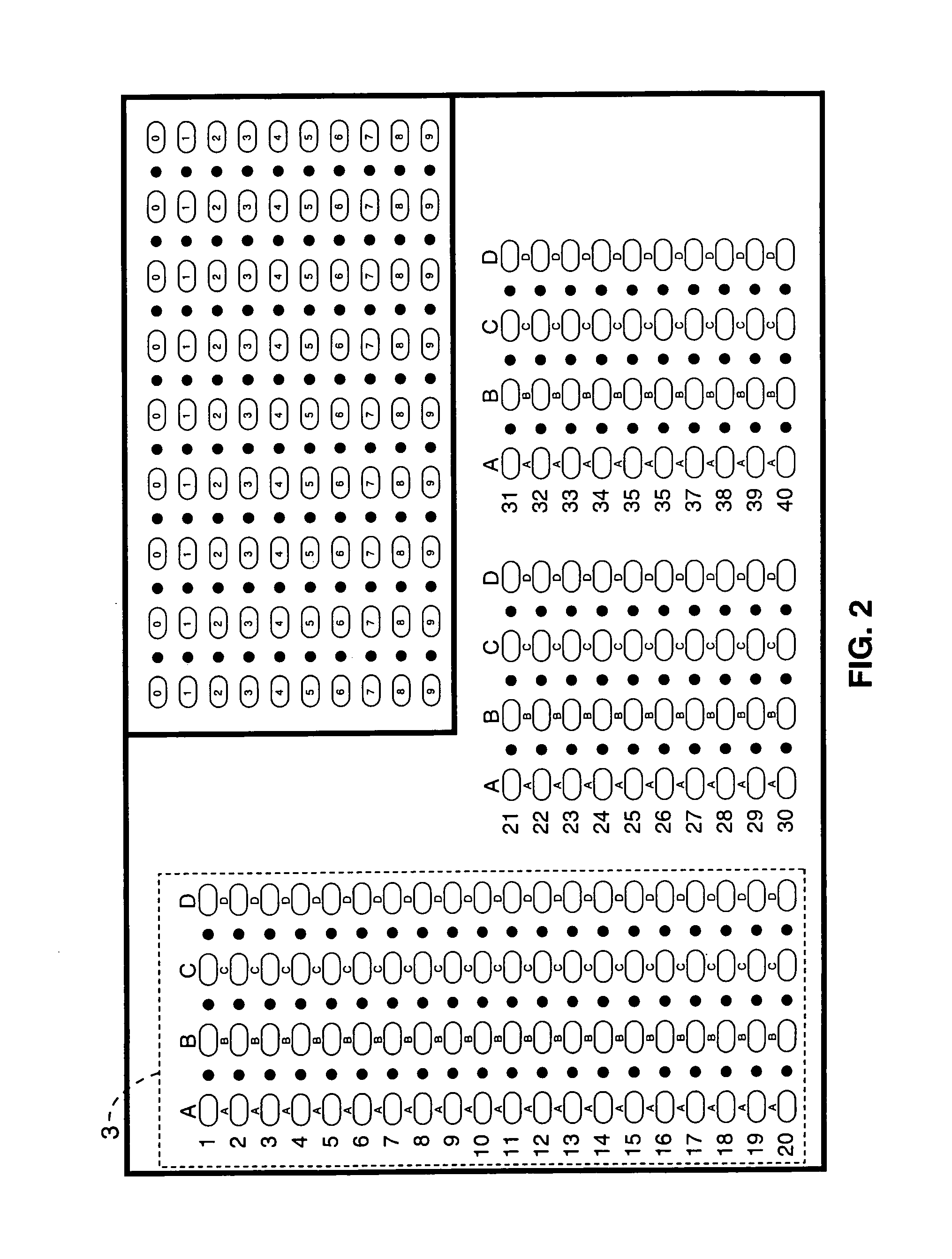System for automatically reading a response form using a digital camera
a digital camera and response form technology, applied in the direction of visual presentation using printers, instruments, electromagnetic radiation sensing, etc., can solve the problems of inability to print or reproduce on plain paper, many limitations, and special forms for omr scanners
- Summary
- Abstract
- Description
- Claims
- Application Information
AI Technical Summary
Benefits of technology
Problems solved by technology
Method used
Image
Examples
Embodiment Construction
[0027]Referring more specifically to the drawings, for illustrative purposes the present invention is embodied in the apparatus generally shown in FIG. 1 through FIGS. 10A and 10B. It will be appreciated that the apparatus may vary as to configuration and as to details of the parts, and that the method may vary as to the specific steps and sequence, without departing from the basic concepts as disclosed herein.
[0028]Again, a preferred embodiment of the invention is a device that comprises three main components: a) a digital camera; b) a computer attached to the digital camera; and c) computer software running on the computer. The subject invention is most easily understood by first understanding how a user interacts with it. Typically a user will use the invention to scan a set of response forms for processing or storage on the computer. In order to accomplish this task the user will typically begin by starting the software on the computer after verifying that the digital camera is ...
PUM
 Login to View More
Login to View More Abstract
Description
Claims
Application Information
 Login to View More
Login to View More - R&D
- Intellectual Property
- Life Sciences
- Materials
- Tech Scout
- Unparalleled Data Quality
- Higher Quality Content
- 60% Fewer Hallucinations
Browse by: Latest US Patents, China's latest patents, Technical Efficacy Thesaurus, Application Domain, Technology Topic, Popular Technical Reports.
© 2025 PatSnap. All rights reserved.Legal|Privacy policy|Modern Slavery Act Transparency Statement|Sitemap|About US| Contact US: help@patsnap.com



